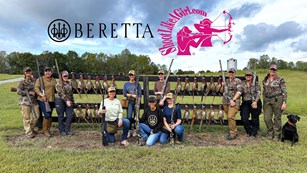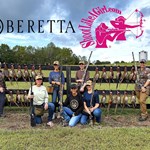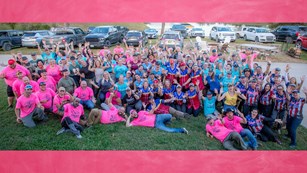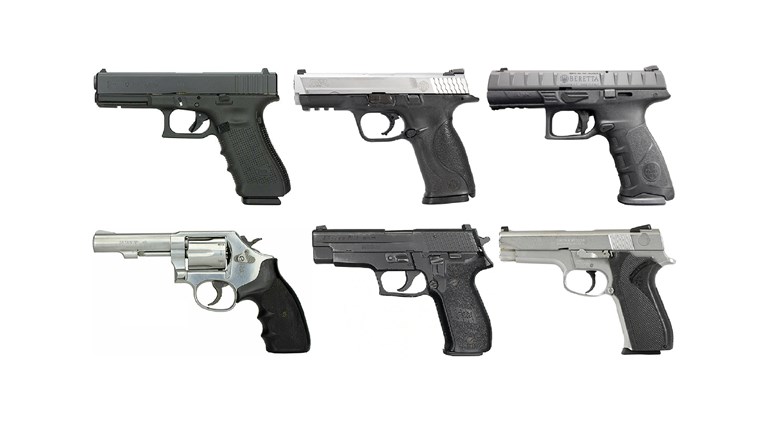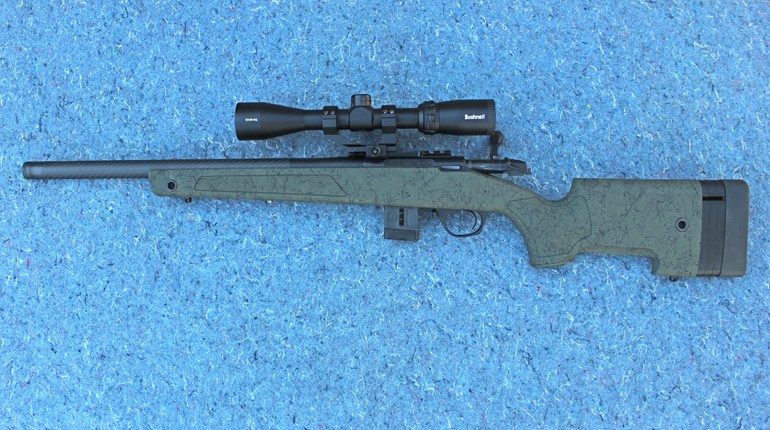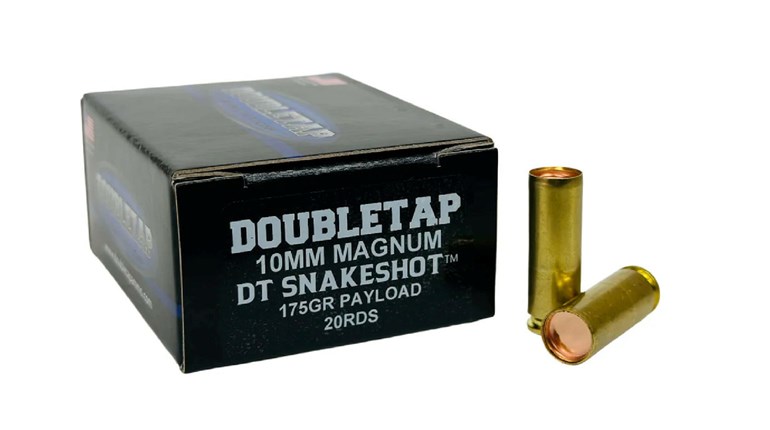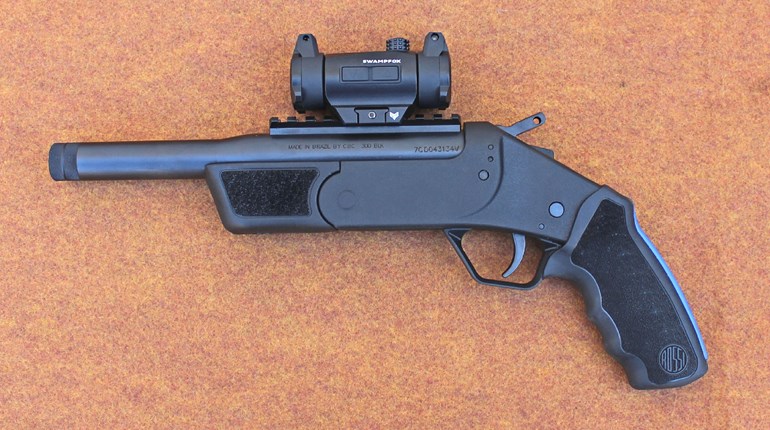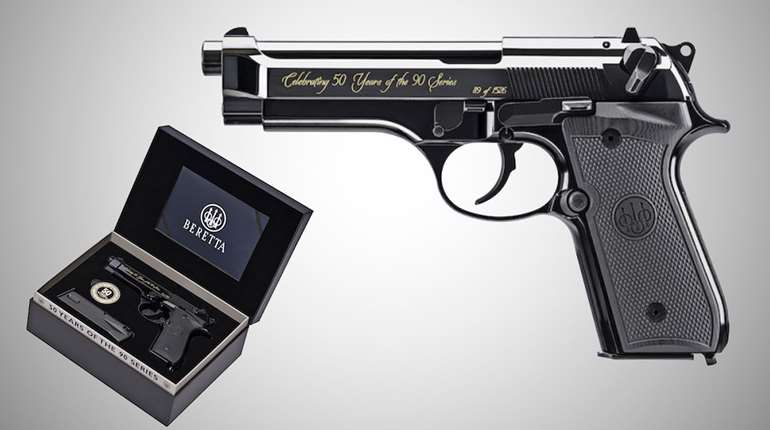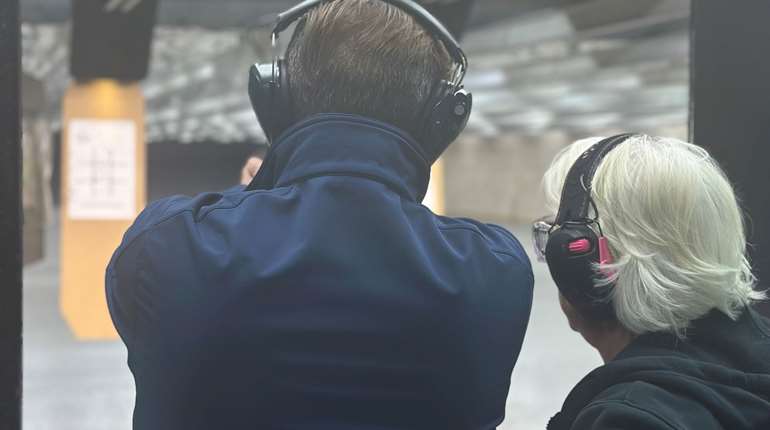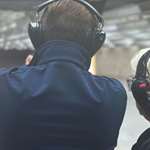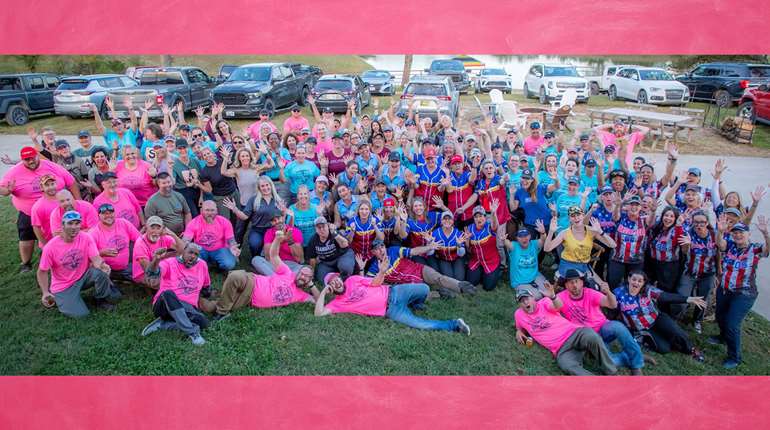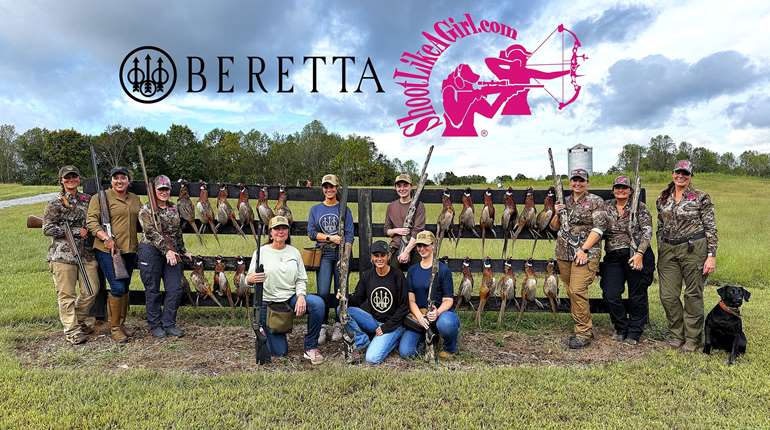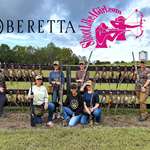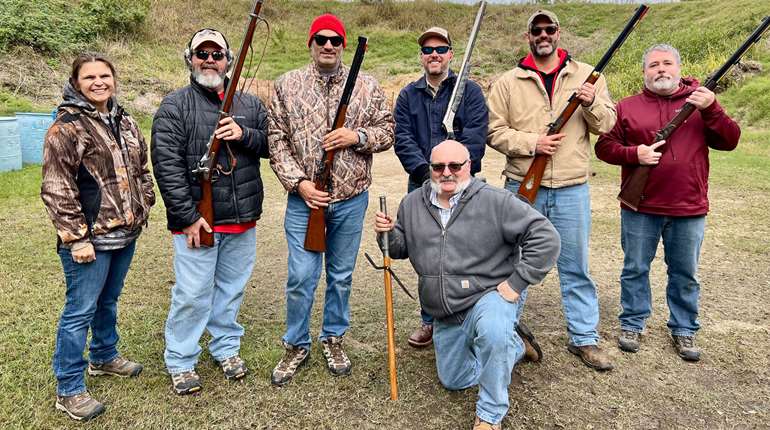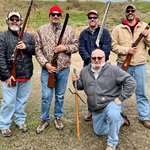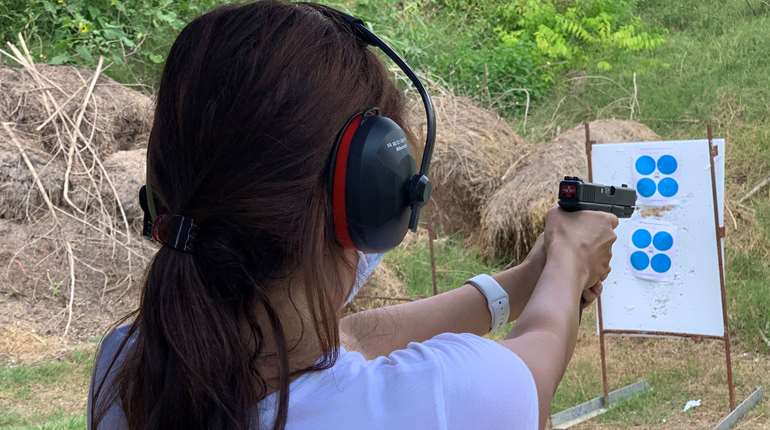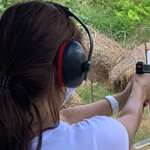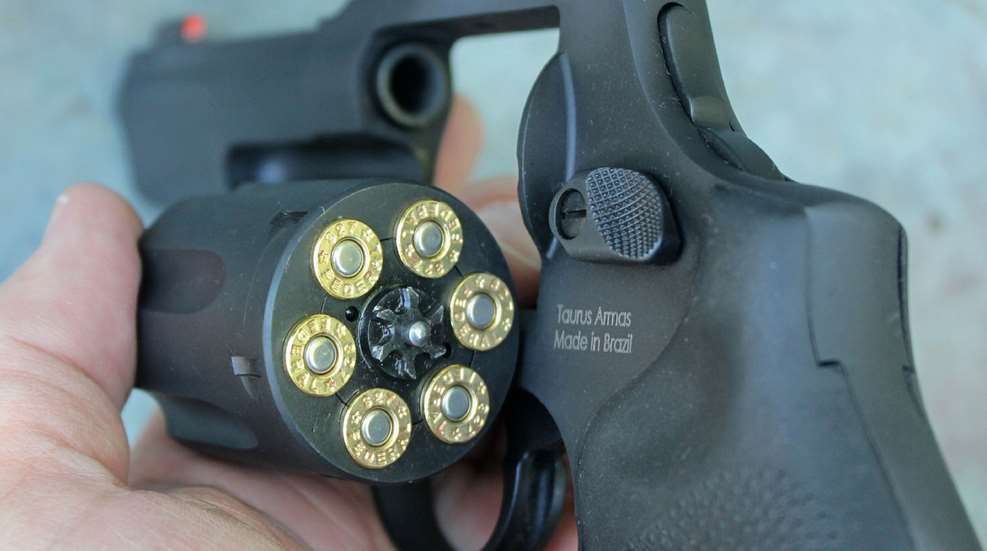
When it comes to defensive revolvers chambered for .32-caliber cartridges, jazz singer Shirley Bassey said it best, "… it's all just a little bit of history repeating." The .32s have a long and storied history. And even though they have been taking a back seat to guns chambered for .38-cal. cartridges for some time now, they are getting some renewed attention in 2024. It would seem that this is due in no small part to the continued and growing interest in low-recoil defensive handguns.
150 Years of Stretching .32-Caliber Revolver Performance
Among the earliest center-fire cartridges in this caliber category was the .320 Revolver, also known as the .32 Short Colt or .32 Webley, developed and produced by the United Kingdom’s P. Webley & Son in 1868. Based on Smith & Wesson's .32 Short Rimfire round, it was not exactly a powerhouse. Launching an 80-gr. bullet at a sedate 550 f.p.s., it generated about 54 ft.-lbs. of energy at the muzzle. In other words, it was notably less powerful than a .22 LR pocket pistol.
In 1878, Smith & Wesson took it upon themselves to improve their .32 revolver performance levels with the release of the .32 S&W, or .32 S&W Short, which is still in limited production today. This cartridge launches bullets in the 85- to 98-gr. weight range at around 700 f.p.s. The result of the upgrade produces bullet energy levels comparable to .22 LR pistols with 4" barrels or .22 Mag. revolvers with 2” barrels. This was a definite improvement, but not earth shattering.

From left: .32 H&R Mag., .327 Fed. Mag., .38 Special and .357 Mag.
In 1896, Smith & Wesson lengthened their .32-caliber cartridge’s case from 0.61" to 0.92" and called it the .32 S&W Long. In later years, lengthening cartridge cases would be done to prevent higher pressure rounds from fitting into older, weaker revolvers. But in this instance, the .32 S&W Short and the .32 S&W Long had the same performance. It was just that the longer round was a better fit for the company's new hand-ejector revolvers.
Although the .32 S&W Long had some success along the way, it was mostly overshadowed by the .38-cal. cartridge options developed around the same time. By the 1920s, the .38 Spl. had become a fixture in law enforcement circles and continued to be a standard option up until the 1990s. That was when state and federal agencies traded out their revolvers for semi-automatic pistols with double-stack magazines.

The Taurus Model 327 Defender T.O.R.O. ships optics ready.
In the early 1930s, folks were tinkering with the .38 Spl. to make it more powerful. Eventually the cartridge case was lengthened from 1.155" to 1.290", more powerful powders were installed and the significantly more potent .357 Mag. cartridge was born. However, the .357 Mag. is too powerful for some applications, so manufacturers started experimenting with a middle ground .38 Special in the 1950s. By the 1970s we saw the arrival of the .38 Special +P loads. Today, the sub compact revolver market is dominated by 5-shot snub nose revolvers chambered for .38 Special and .38 Special +P loads with some models chambered in .357 mag., which can safely fire all three cartridges.
With the ammunition flexibility provided by modern .38 Special +P and .357 Mag. rated revolvers, the .32s almost slipped into obscurity. But in 1984, gun maker Harrington & Richardson and Federal Ammunition teamed up to breathe new life into the .32-caliber revolvers. Using the .32 S&W Long as the starting point, the case was lengthened, loaded with up-to-date powder charges and topped with modern hollow point bullets. The resulting round would be called the .32 H&R Magnum, or .32 H&R Mag.
Although the .32 H&R Mag. is a slimmer cartridge launching smaller bullets, it was designed to go toe-to-toe with the .38 Spl. Today's commercial loads and hand loader information includes bullets weighing between 60 to 115 gr. launching at velocities of around 800 to 1300 f.p.s. This cartridge can generate muzzle energy levels hovering between 160 to 250 ft.-lbs. which overlaps with that of the .38 Spl., while generating lower levels of felt recoil. And because of its slimmer profile, a subcompact revolver cylinder can hold up to six rounds instead of just five.

The Holosun SCS-Carry is self charging so no battery swaps are required.
The .32 H&R Mag. is a well designed and effective round that should have been a slam dunk. But like the .32 S&W long, it has had its successes over the years while mostly remaining a niche round with a small, but loyal following. If you ask me why, I will say it still lacked the ammunition flexibility of the .38-cal. revolvers.
Federal Ammunition must have been thinking the same thing because they reinvented the .32-cal. cartridge again in 2008 with the launch of the .327 Federal Magnum. Tell me if this process sounds familiar. They took the .32 H&R Mag. cartridge, stretched the casing to 1.20”, souped up the powder and invented what is essentially a .32 H&R Magnum-Magnum. In the course of my own range tests, I've seen the .327 Fed. Mag. generate 418 ft.-lbs. of muzzle energy when fired from a snubby 1.87" barrel. This means the cartridge's performance potential overlaps the lower end of the .357 Mag. bullet energy range.

The .32-cal. revolvers can hold six rounds instead of five.
Yet again, Federal Ammunition should have had a slam dunk with the .327 Fed. Mag. The revolver models chambered for this round can also safely fire .32 H&R Mag. and .32 S&W Long ammunition. That means those who buy one of these revolvers have three levels of ammunition performance to choose from, and with less recoil across the board. But things don’t always go to plan. There were issues with getting both the revolvers and the ammunition to market at the same time. This hampered sales and cooled potential adopters’ enthusiasm. Overall, the .327 Fed. Mag. cartridge has established a firm, if relatively small, following that has yet to take a bite out of the .38-cal. revolver market.
Why Consider the .32s Now?
If the .32 H&R Mag. and the .327 Fed. Mag. have been sidelined by the .38 Spl. and the .357 Mag. over the years, then why would anyone want to consider them for self defense these days? There are two good reasons: reduced recoil and increased ammunition capacity. A subcompact revolver loaded with .32 H&R Mag. defense-grade ammunition can perform like a .38 Spl., while holding one more round in the cylinder and generating less recoil. And revolvers chambered for the longer .327 Fed. Mag. cartridge will also safely chamber and fire .32 H&R Mag. and .32 S&W Long.
But as with other low-recoil defensive caliber options we've discussed on this site, the .32s do have their limitations. Because this is a less popular caliber category, the selection of guns available for them is fairly limited, much like the soft shooting .22 Mag. rimfire pistols and semi-automatics chambered in FN 5.7x28 mm. However, the revolver models which are available are good ones.
For those who only want to shoot .32 H&R Mag., and possibly .32 S&W Long, Smith & Wesson recently released a Lipsey's exclusive version of its lightweight Model 432 Ultimate Carry Revolver in this caliber. The only other dedicated .32 H&R Mag. wheel guns I could find in current production are offered by Charter Arms, including models in their Undercoverette, Professional and Off Duty lines.

This version of the Taurus Model 327 has a bobbed hammer for a no-stag draw.
For those who are in the market for the ammunition flexibly of a lightweight revolver chambered in .327 Fed. Mag., Ruger makes the polymer and aluminum-framed, 1.87" barrel LCR (internal hammer) and LCRx (exposed hammer). This company also offers the all-stainless SP101 chambered in .327 Fed. Mag. with two model options including a 3" barrel and a 4" barrel.
Taurus USA is the other company currently offering steel-framed snubby .327 Fed Mag. revolvers. Two years ago I got to work with a standard, stainless steel version of the Model 327 outfitted with a 2" barrel. I liked the results and hoped the series would continue to expand, which it did this year.
Taurus 327 Defender T.O.R.O. and the Holosun SCS-Carry
One of the reasons it seemed like a good time to revisit the question of .32-cal. wheelguns was the addition of a six-shot Model 327 to the Taurus Defender T.O.R.O. revolver series for 2024. The Defenders sport 3" barrels, bright orange outlined night sight front sights and extended three-finger rubber grips. T.O.R.O. stands for Taurus Optics Ready Option. Taurus was the first to offer sub-compact revolvers with micro red-dot optics mounting systems. An optics plate, which is secured to the revolver's top strap using two screws, is provided with the gun. Other features include an all-stainless steel construction, a non-reflective matte black finish and a bobbed hammer. The double-action only trigger pull weighed in at 8-lbs. 15-oz. with a smooth, clean feel. Trimming off the hammer gives the gun a sleek, no-snag profile and a second compact rubber grip is provided. This revolver and accessory set has a suggested retail price of $553.99

The .32 H&R Mag. cartridge generates less felt recoil than standard pressure .38 Spl. ammunition.
One of the virtues of double-action revolvers is that they are simple to operate. In selecting an optic to test with this carry gun I was hoping to find one that's just as easy to use. Holosun now offers the new SCS-Carry. The SCS in this enclosed micro red-dot pistol sight's name stands for Solar Charging Sight. A top mounted solar panel is connected to a rechargeable 20,000-hour battery. This means the sight can operate indefinitely without the need for battery replacements. Multi-directional light sensors automatically adjust the sight's brightness, depending on the levels of ambient light. A single control button activates the green aiming reticle that can be set to appear as a central 2 MOA dot, a 32 MOA hash marked circle or both dot and circle at the same time. Other features include an anodized 7075 T6 aluminum housing, multi-layer glass lens and an IPX8 waterproof rating. This optic, with mounting hardware, is listed for $470.

The Model 327 Defender's optics plate is compatible with the SCS-Carry, so installation consisted of twisting in a total of four screws, two for the plate and two more for the optic. This revolver and micro red-dot combination proved to be utterly reliable at the shooting range. The revolver chambered, fired and ejected tested ammunition flawlessly with all of the controls working properly. Holosun's green bullseye-style reticle is one of my favorites to work with because it is bright, easy to see and quick to acquire. Overall, this combo provided an enjoyable shooting experience at the shooting range in a comfortable to carry configuration.
DoubleTap Ammunition’s .32-Caliber Options
In the course of researching .32 H&R and .327 Fed. Mag. ammunition for this range test, I took a look at DoubleTap Ammunition's catalog. I learned that this company offers three of the same loads in both calibers. They include a defensive 60-gr. solid-copper hollow point, a 120-gr. flat nose, hard cast lead bullet suitable for defense against dangerous game and some of the DT SnakeShot loads. The snake shot rounds, which launch a payload consisting of fine #9 lead birdshot and a hard cast lead disk, are handy options for dispatching venomous snakes, rats and similarly sized pests at close range.

The recoil generated by all three .32 H&R Mag. loads was modest and easy to control. The .327 Fed. Mag. snake shot load was soft shooting, like the .32 H&R Mag. The 60-gr. hollow point had a bit more pep to it but was still in the moderate range. The 120-gr. lead flat point was noticeably more energetic.

The following table shows the performance results for the .32 H&R and .327 Fed. Mag. loads topped off with hollow points and hard cast bullets using a Garmin Xero C1 Pro chronograph to measure bullet velocity:

Evaluating the snake shot loads called for a different testing methodology to pattern the birdshot and to see what kind of group sizes to expect from the lead disks. In this case, five rounds were fired into 22" x 34" paper targets set at distances of 2-, 5- and 7-yards. The .32 H&R Mag. cartridge has a 90-gr. payload, consisting of 100 pieces of lead birdshot and a 40-gr. lead disk, with a listed velocity of 1,000 f.p.s. The tested 10-shot velocity was 1,007 f.p.s., with the following pattern results:
2 yards
Birdshot Pattern: 8.5"
Lead Solids Group: 1.08"
5 yards
Birdshot Pattern: 19"
Lead Solids Group: 2.42"
7 yards
Birdshot Pattern: 27"
Lead Solids Group: 5.93"

The .327 Fed. Mag. cartridge has a slightly heavier 95-gr. payload with about 10 more pieces of birdshot than the .32 H&R Mag. It's listed as having the same 1,000 f.p.s. velocity. However, the chronograph showed a noticeably slower muzzle velocity of 866-fps. Here are the pattern results for this round:
2 yards
Birdshot Pattern: 8”
Lead Solids Group: 1.89”
5 yards
Birdshot Pattern: 19”
Lead Solids Group: 3.48”
7 yards
Birdshot Pattern: top to bottom coverage
Lead Solids Group: 2.05”

Parting Shots
Finding reduced recoil defensive handgun options can be a challenge, especially for those who prefer the simplicity, reliability and ammunition flexibility of a double-action revolver. It may seem like the only options are the soft shooting, but less powerful .22-cal. rimfire models or just holding on tight to the hard kicking .38s. Although the gun selection is less diverse and it may take a bit more effort to find the ammunition, revolvers chambered for .32 H&R Mag. and .327 Fed. Mag. offer an effective middle ground option. Remember that just because some calibers are currently overlooked by the shooting sports media doesn't make them any less of a good fit for some folk's self defense needs.






